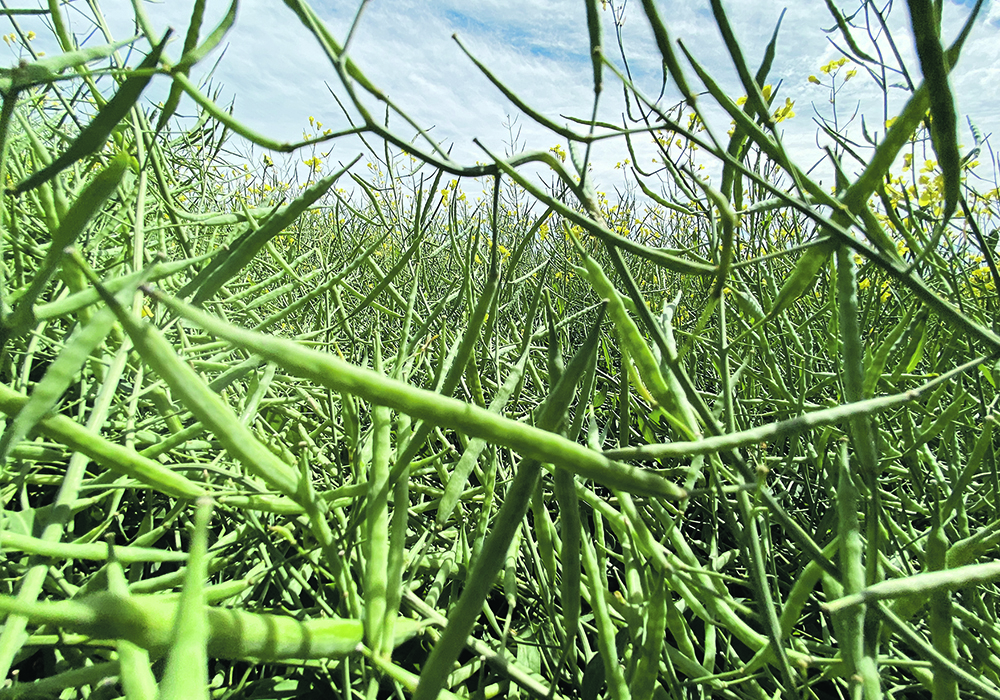Farmers are excited about opportunity created by a corporate partnership to dramatically increase winter canola acres
Andrew Moore and his family, who farm in northwestern Georgia, started growing canola in the late 1980s.
They had success with the crop, and it was a useful alternative to winter wheat in their rotation.
They stopped for a while in the 1990s and early 2000s,when a canola buyer went out of business, then resumed growing the oilseed in the late 2000s.
During those years, Moore always believed that one day, winter canola would become a common crop in the U.S. southeast.
Read Also

Volatile temperatures expected for this winter
DTN is forecasting a lot of temperature variability in the Canadian Prairies this winter. Precipitation should be close to average.
“One day” hasn’t arrived yet, but it could be around the corner.
In mid-March, Bunge, Chevron and Corteva announced a partnership to dramatically increase winter canola acres in the U.S. South. The canola will be used as a feedstock for renewable diesel production.
“It is the biggest announcement we’ve had (in) the southeast for winter canola, forever,” Moore said March 21, as he drove his son to a baseball game near Resaca, Ga.
Bunge Chevron Ag Renewables, the joint venture between Bunge and Chevron, will contract production with farmers in the U.S. southeast and use the winter canola to produce renewable fuel.
Corteva’s role in the partnership is developing winter canola hybrids suited for the U.S. southeast.
The canola will likely be processed at soybean crushing plants in Louisiana and Illinois.
In 2022, Chevron and Bunge announced plans to expand the two plants and look for other “renewable feedstocks.”
“Chevron expects to create the capacity to produce 100,000 barrels per day of renewable diesel and sustainable aviation fuel by 2030,” said Mark Nelson, an executive vice-president for Chevron, in February 2022.
Corteva has said that winter canola acreage in the U.S. South could explode, potentially going from almost nothing to possibly 10 million acres within seven to nine years.
Moore, president of the U.S. Canola Association, said this partnership is a game changer.
Previously, the handful of farmers who grew canola in Georgia would sell it to Moore — who installed an expeller press on his farm in the late 2000s.
Moore sold non-genetically modified canola oil to clients in the food industry. There have been a couple of other canola crushers in the southeast, including one that supplied canola oil to Whole Foods.
But the market is tiny.
It’s so small that the U.S. Department of Agriculture doesn’t publish canola acreage statistics for states in the U.S. southeast.
“Our limitation in the past has not been production…. The limiting factor in the past has always been (the) market,” Moore said.
“We grow canola really well down here. Average would be between 50 and 60 bushels an acre.”
The farmers who do grow winter canola typically double crop it with soybeans. Moore plants canola in early October, harvests the crop in June and then immediately puts soybeans in the ground.
The double-cropping system is an environmental win for renewable diesel manufacturers because it increases the feedstock produced per acre of land.
“It dramatically helps with reducing the carbon intensity score,” Moore said.
In nearby Tennessee, there’s probably only 1,000 acres of winter canola in the entire state, said Jason de Koff, a professor of agronomy and soil science at Tennessee State University.
De Koff studies biofuel crop production and has published several papers on the agronomics of winter canola.
But his phone isn’t ringing off the hook with questions about canola.
“I haven’t had any demands from farmers on how to grow it. I haven’t seen any uptick yet,” he said. “Hopefully with this new push, we’ll start to see some more (interest).”
There are Tennessee farmers who plant winter wheat and then soybeans in the spring. Winter canola could displace some winter wheat acres if producers are willing to try something new.
Moore is confident that farmers in the region will try winter canola because it provides agronomic benefits for other crops in the rotation.
Winter canola increases soybean yields by about 10 percent because it’s a non-host for pests like nematodes and aphids.
It also helps that major companies will be promoting canola, Moore said.
“Bunge is large and Corteva is large. They will make sure that producers are taken care of.”
















